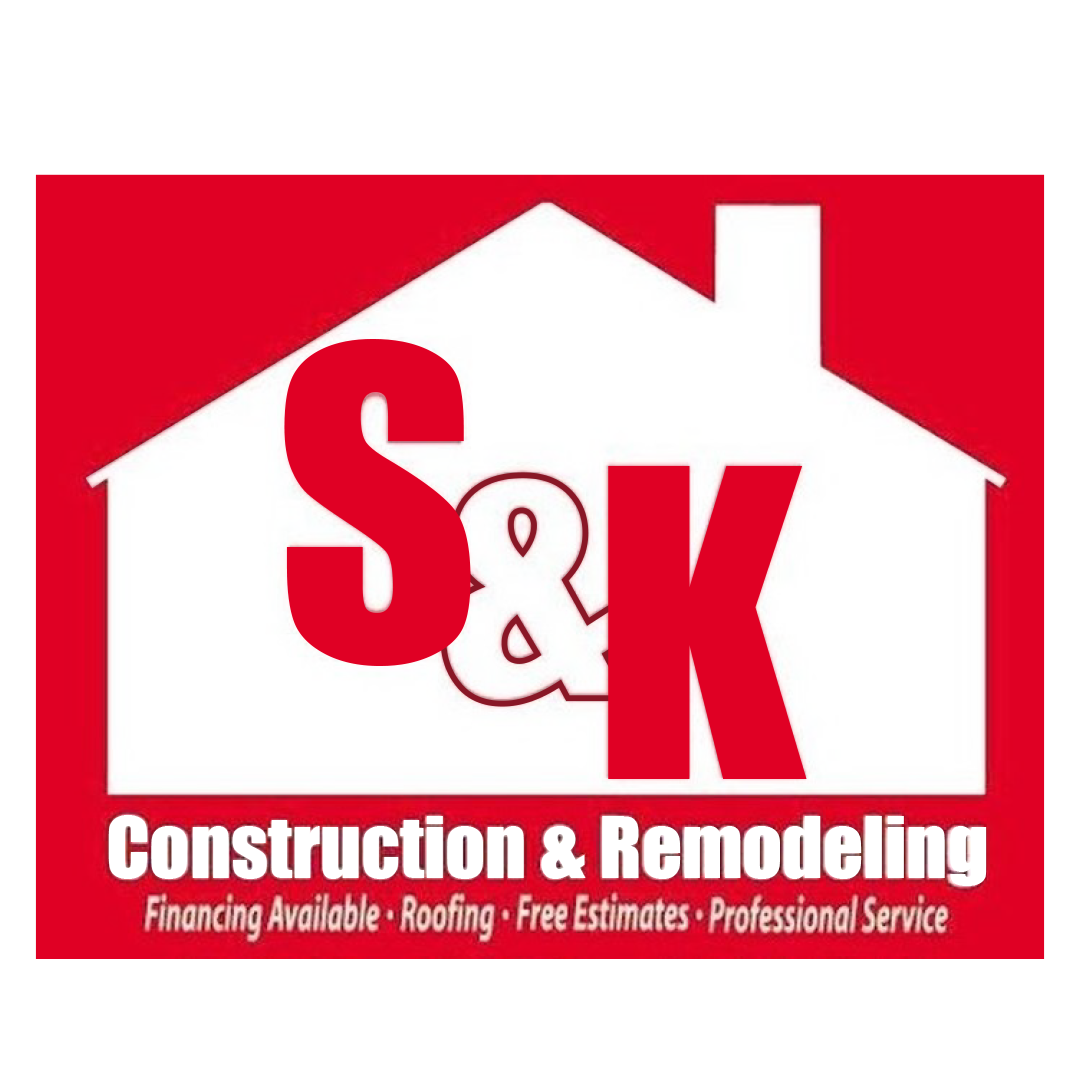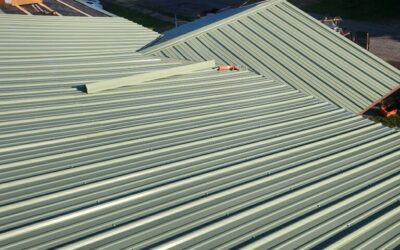How to Trace a Leak in the Ceiling: A Step-By-Step Guide for Northeast Ohio Homeowners
A dripping ceiling can turn your peaceful home into a stress zone in no time—especially when you can’t see what’s causing it. If you’re asking “How do I trace a leak in the ceiling?”, this comprehensive, 2,800-word guide will walk you through every step, from spotting the first water stain to pinpointing the leak’s source. Whether you live in Jefferson, Ashtabula, Youngstown, or Cleveland Heights, the roofing experts at S&K Construction and Remodeling LLC are here to help you diagnose the problem and recommend the right solution.
Table of Contents
- Why Tracing a Ceiling Leak Matters
- Early Warning Signs of a Ceiling Leak
- Step 1: Document and Photograph the Damage
- Step 2: Gather Indoor Clues
- Step 3: Inspect Your Attic
- Step 4: Perform an Exterior Roof Walk-Around
- Step 5: Conduct a Controlled Water Test
- Step 6: Use Advanced Detection Tools
- Step 7: Create a Detailed Leak-Mapping Diagram
- Common Leak Sources to Check
- DIY vs. Professional Leak Tracing
- How S&K Construction and Remodeling Handles Leak Tracing
- Preventative Maintenance to Avoid Future Leaks
- FAQs About Tracing Ceiling Leaks
- Conclusion & Call to Action
1. Why Tracing a Ceiling Leak Matters
A ceiling leak is more than just an annoying drip—it’s a symptom of water infiltration that, if left unchecked, can cause:
- Structural damage: Prolonged moisture weakens drywall, ceiling joists, and roof decking.
- Mold growth: Damp conditions foster mold and mildew, leading to health concerns.
- Electrical hazards: Water near wiring, light fixtures, or outlets increases fire and shock risks.
- Escalating repair costs: Small leaks can balloon into major restorations if ignored.
By accurately tracing the leak, you target repairs precisely—avoiding unnecessary roof tear-offs and saving both time and money. In Northeast Ohio’s freeze-thaw climate, early detection in places like Madison, Chardon, and Mentor is critical to prevent winter ice dams and spring rain from worsening the issue.
2. Early Warning Signs of a Ceiling Leak
Before you even grab a ladder, watch for these telltale indicators:
- Discolored spots: Yellow, brown, or gray rings on ceilings or walls.
- Bubbling paint or plaster: Bulges or blisters where moisture pushes materials outward.
- Musty odors: A damp, mildew-like smell—especially in closets or upper-floor rooms.
- Sagging drywall: Soft or bowed sections of the ceiling hint at saturation.
- Drips and puddles: Obvious water drops or steady drip rates during or after precipitation.
- Rust on fixtures: Corrosion on light fixtures, nails, or recessed cans in the attic.
Document the date, time, and weather conditions when you first notice these signs. This log will help correlate specific storms or temperature swings (common around Lakewood and Euclid) with leak activity.
3. Step 1: Document and Photograph the Damage
Accurate documentation is the foundation for an effective leak trace—and essential for any insurance claims:
- Photograph every stain: Capture close-ups and wider shots to show scale.
- Note sizes and shapes: Use a ruler or tape measure next to stains for reference.
- Mark locations: Place removable painter’s tape next to spots and write the date on each piece.
- Keep a leak journal: Record weather conditions, your observations, and any changes over time.
Having clear, time-stamped evidence helps roofing professionals from S&K Construction and Remodeling LLC diagnose the leak’s origin more quickly and provides insurers with the proof they need.
4. Step 2: Gather Indoor Clues
Before heading into the attic or onto the roof, collect clues inside:
- Trace water trails: Water often runs along wiring or joists before dripping. Look for damp spots along beams or around light fixtures.
- Inspect closets and hallways: Sometimes stains hide behind furniture or in small rooms.
- Check walls adjacent to the ceiling: Leaks can wick down walls before appearing on the ceiling below.
- Examine HVAC vents: Moisture can follow ductwork and collect near vents, mimicking a roof leak.
By narrowing down the general zone, you reduce the exterior area you need to search—particularly useful for larger homes in Cleveland’s suburban neighborhoods.
5. Step 3: Inspect Your Attic
If your home has attic access, it’s your next best vantage point. Proceed with caution—wear protective gear, sturdy shoes, and use strong lighting.
What to look for:
- Wet insulation: Damp, matted, or discolored fiberglass or cellulose indicates active leaks.
- Streaks on rafters or sheathing: Follow dark lines uphill toward the source.
- Daylight peeking through: Even tiny pinholes in decking can admit water and light.
- Mold or mildew patches: Black or green growth marks recurring moisture.
- Rusted nails: Corroded fasteners are a sign of ongoing water contact.
Mark any suspect spots with bright tape. In homes throughout Ashtabula County and Lake County, attic condensation from poor ventilation often complicates leak detection—our pros use hygrometers to distinguish condensation vs. roof leaks.
6. Step 4: Perform an Exterior Roof Walk-Around
Armed with attic clues, inspect the roof surface. Always follow ladder-safety best practices and have a spotter if possible.
Key areas to examine:
- Shingles: Look for missing, cracked, curled, or blistered shingles. Granule loss often precedes leaks.
- Flashing: Check around chimneys, skylights, dormers, and valleys for rust, gaps, or lifted edges.
- Vent boots: Rubber boots around pipe vents can split or shrink, admitting water.
- Valleys: Debris or worn underlayment in valleys diverts water under shingles.
- Eaves and gutters: Clogged gutters can cause water to back up under the roof edge, leaking into fascia and ceiling.
For complex, steep-pitch roofs in Willoughby or Concord, consider aerial drone imagery—our team can safely survey hard-to-reach spots.
7. Step 5: Conduct a Controlled Water Test
When leaks are intermittent or hidden, a garden-hose test pinpoints entry points under clear skies:
- Interior observer: Have someone stationed in the attic or under the ceiling to watch for drips.
- Section the roof: Spray a 3- to 4-foot horizontal band for 3–5 minutes, starting at the lowest suspect area.
- Move upward: After each section, check the interior for new leaks.
- Repeat systematically: Narrow down to the exact shingle row or flashing detail causing the issue.
Avoid high-pressure nozzles—they can force water under shingles and yield false positives. This method is especially effective after storms in Mentor and Madison, where wind-driven rain complicates natural observation.
8. Step 6: Use Advanced Detection Tools
For stubborn leaks that evade visual inspection and hose testing, professionals deploy:
- Infrared (IR) Cameras: Thermal imaging reveals cooler, moisture-laden areas beneath roofing layers.
- Moisture Meters: Pin or pinless meters quantify moisture levels in decking, insulation, or drywall.
- Thermal Hygrometers: Measure attic humidity, distinguishing condensation from external water infiltration.
- Drone Thermal Scans: Combine aerial photography and IR to map moisture across large or complex roof surfaces.
At S&K Construction and Remodeling LLC, we integrate these cutting-edge tools to deliver precise leak diagnostics—no guesswork, no unnecessary roof tear-offs.
9. Step 7: Create a Detailed Leak-Mapping Diagram
Once you’ve collected data from interior, attic, exterior, and tests, synthesize your findings:
- Sketch your roof plan: Outline ridges, valleys, and penetrations.
- Mark interior stain locations: Use symbols to show severity and date documented.
- Overlay attic observations: Note damp rafters, insulation, and daylight holes.
- Annotate hose-test zones and IR findings: Color-code each method’s results.
This leak-mapping diagram guides targeted repairs, ensuring crews address only problem areas—ideal for homeowners across Cuyahoga, Geauga, and Portage counties who want minimal disruption.
10. Common Leak Sources to Check
| Leak Source | How to Spot It |
|---|---|
| Flashing Failure | Rust, separations, or missing sealant edges. |
| Vent Boot Splits | Cracked or shrunken rubber around vents. |
| Nail Pops | Raised nails lifting shingles, creating gaps. |
| Valley Leaks | Granule loss and debris buildup in valleys. |
| Skylight Seals | Fogged panes or cracked curb flashing. |
| Ice Dams | Icicles at eaves and backed-up water under shingles. |
| Clogged Gutters | Overflow staining under fascia boards. |
| Aging Underlayment | Exposed, torn, or deteriorated felt or synthetic. |
Regularly inspecting these hotspots—especially after storms or seasonal changes—reduces the chances of hidden leaks plaguing homes in Lakewood, Twinsburg, and Euclid.
11. DIY vs. Professional Leak Tracing
DIY efforts are suitable for:
- Basic attic inspections and hose tests.
- Clearing debris from valleys and gutters.
- Sealing small cracks with quality roofing caulk.
Call a professional when:
- The leak source remains elusive after initial checks.
- You need insurance-grade documentation and moisture readings.
- The roof is steep, high, or structurally complex.
- You want an Owens Corning–backed repair that preserves warranty coverage.
DIY can save money, but complex leaks often cost more in long-term damage if misdiagnosed. Our team at S&K Construction and Remodeling LLC offers free leak inspections and will determine if a DIY fix is sufficient or if advanced repair is required.
12. How S&K Construction and Remodeling Handles Leak Tracing
Our proven, four-phase approach ensures fast, accurate diagnosis and lasting repairs:
- Comprehensive Inspection
- Interior, attic, and exterior surveys
- Infrared scanning and moisture mapping
- Controlled Testing
- Garden-hose tests under real-world conditions
- Humidity and airflow analysis
- Leak-Mapping & Reporting
- Detailed diagrams and photo documentation
- Written estimates with recommended solutions
- Targeted Repair & Verification
- Flashing, shingle, or underlayment replacement only where needed
- Post-repair testing to confirm leak elimination
As an Owens Corning Preferred Contractor serving Northeast Ohio, including Jefferson, Ashtabula, and Youngstown, we back every repair with manufacturer warranties and a 5-year workmanship guarantee.
13. Preventative Maintenance to Avoid Future Leaks
Stay ahead of potential problems with routine care:
- Biannual Roof Inspections: Spring (post-winter) and fall (pre-winter) checks.
- Gutter Cleaning: Remove leaves and debris at least twice a year.
- Attic Ventilation Audit: Ensure soffit, ridge, and gable vents are clear.
- Ice-Dam Prevention: Install heat cables or upgrade insulation to reduce attic heat loss.
- Flashings & Sealant Renewal: Replace worn flashing and re-caulk penetrations every 10–12 years.
Enroll in our Annual Maintenance Plan for priority scheduling, discounted inspections, and early detection—ideal for busy homeowners in Chardon, Concord, and Beachwood.
14. FAQs About Tracing Ceiling Leaks
Q1: How long does it take to trace a ceiling leak?
A: Simple cases can be diagnosed in under an hour; complex scenarios involving IR scans or drone surveys may take several hours.
Q2: Will tracing a leak damage my roof?
A: No—methods like hose tests, IR scanning, and non-invasive attic checks preserve your roof’s integrity.
Q3: Can condensation be mistaken for a ceiling leak?
A: Yes. High attic humidity from poor ventilation can drip moisture. We use hygrometers and airflow tests to distinguish the two.
Q4: Is a full roof replacement necessary to fix a leak?
A: Rarely. Our targeted repairs focus on the exact problem area, saving you money and preserving as much of your existing roof as possible.
Q5: Do you provide a written warranty on leak repairs?
A: Absolutely. We offer Owens Corning product warranties plus a 5-year workmanship guarantee on all repair services.
15. Conclusion & Call to Action
Tracing a ceiling leak can feel like chasing a ghost, but with a systematic approach—interior clues, attic inspections, exterior surveys, controlled tests, and advanced tools—you can pinpoint the source and implement a precise fix. For homeowners across Northeast Ohio, from Jefferson to Cleveland Heights, the team at S&K Construction and Remodeling LLC delivers expert leak tracing, targeted repairs, and industry-leading warranties.
Don’t let a hidden drip become a costly disaster. Schedule your free ceiling leak inspection today:
📞 Call us at (440) 384-3251
🌐 Visit www.skconstructionremodeling.com
Protect your home, your health, and your investment—reach out now and get your leak under control once and for all!
 (440) 307-2060
(440) 307-2060

